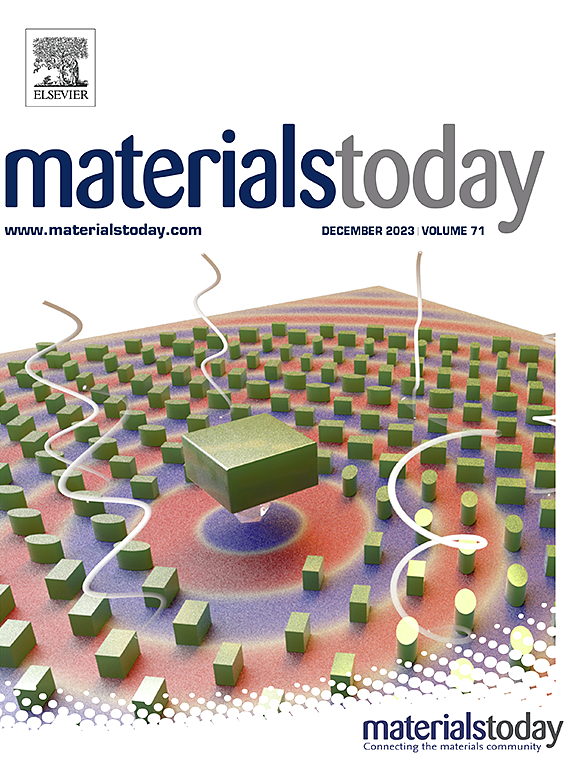Rational design of metal–organic framework based photocatalysts correlated with specific additives for driving gas–liquid-solid CO2 reduction
IF 21.1
1区 材料科学
Q1 MATERIALS SCIENCE, MULTIDISCIPLINARY
引用次数: 0
Abstract
Crystalline porous materials such as metal–organic frameworks (MOFs) have already been applied extensively to photocatalytic CO2 conversion because of the semiconductor-like property, high specific surface area, and tunable structure. Most of MOFs have existing problems of self-decomposition during gas–solid photocatalytic CO2 reduction, making them more applicable to a gas–liquid-solid reaction system due to the advantages of room-temperature environment and uniform dispersion of catalysts. However, the review specifically focusing on the progress of gas–liquid-solid photocatalysis over MOF-based materials is relatively scarce so far. Unlike the reaction of CO2 gas with H2O vapour in gas–solid mode, the gas–liquid-solid reaction system consists of diverse additives such as photosensitizers and sacrificial agents, which strongly depend on the structural design of photocatalysts. This review classifies the structure of MOF-based materials that correlated with their requirements of specific additives for driving CO2 reduction. Specifically, we review the recent advances from the requirements of photosensitizers and sacrificial additives to the green overall photosynthesis (just using H2O as the electron donor). The corresponding strategies for the structural design of MOFs from the aspects of crystal structure, building blocks, photosensitizer units are discussed to clarify the structure–activity relationship. Finally, the challenges and prospects are proposed to develop green and effective MOF-based photocatalysts for CO2 utilization.

金属-有机骨架光催化剂的合理设计与特定添加剂相关,以驱动气-液-固CO2还原
晶体多孔材料如金属有机骨架(mof)由于具有半导体性质、高比表面积和可调结构,已广泛应用于光催化CO2转化。大多数mof在气固光催化CO2还原过程中存在自分解问题,室温环境和催化剂分散均匀的优点使其更适用于气液固反应体系。然而,目前专门针对mof基材料的气-液-固光催化研究进展的综述相对较少。与CO2气体与H2O蒸汽在气固模式下的反应不同,气-液-固反应体系由多种添加剂组成,如光敏剂和牺牲剂,这在很大程度上取决于光催化剂的结构设计。本文综述了mof基材料的结构及其对特定添加剂的要求。具体来说,我们从光敏剂和牺牲添加剂的要求到绿色整体光合作用(仅以H2O为电子供体)的最新进展进行了综述。从晶体结构、组成单元、光敏剂单元等方面探讨了MOFs结构设计的相应策略,阐明了MOFs的构效关系。最后,展望了开发绿色高效的mof基CO2光催化剂所面临的挑战和前景。
本文章由计算机程序翻译,如有差异,请以英文原文为准。
求助全文
约1分钟内获得全文
求助全文
来源期刊

Materials Today
工程技术-材料科学:综合
CiteScore
36.30
自引率
1.20%
发文量
237
审稿时长
23 days
期刊介绍:
Materials Today is the leading journal in the Materials Today family, focusing on the latest and most impactful work in the materials science community. With a reputation for excellence in news and reviews, the journal has now expanded its coverage to include original research and aims to be at the forefront of the field.
We welcome comprehensive articles, short communications, and review articles from established leaders in the rapidly evolving fields of materials science and related disciplines. We strive to provide authors with rigorous peer review, fast publication, and maximum exposure for their work. While we only accept the most significant manuscripts, our speedy evaluation process ensures that there are no unnecessary publication delays.
 求助内容:
求助内容: 应助结果提醒方式:
应助结果提醒方式:


